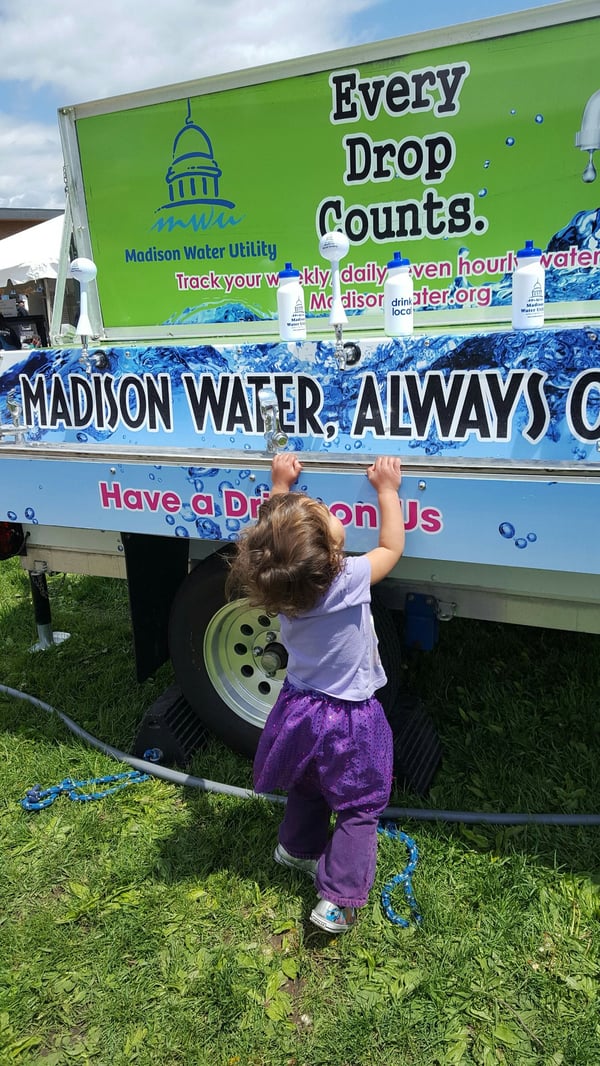“Every drop counts.”
This message, promoted by the Madison (Wis.) Water Utility, is one supported by water purveyors throughout the United States.
Water districts play a key role in protecting the public water supply. Many, if not all, have taken measures to ensure cross connection control management. Their backflow prevention programs add a crucial layer of safety to protect water quality.
Of course, backflow occurs when water reverses flow into the public water supply after passing through the water meter. When this happens, there is risk of contamination and jeopardizing drinking water and public health.
Water Quality Leaders
These three municipalities have chosen to lead the way, emphasizing backflow prevention to enhance public water safety.
Las Vegas Valley Water Department
Backflow prevention valves must be inspected to make sure they’re working. Typically, local authorities require annual inspections. All too often, inspections aren’t performed on a timely basis, raising the possibility of equipment failure and cross-connection.
But not in Las Vegas. The district owns all backflow devices, while staff performs regular preventative maintenance and testing as prescribed.
Customers who currently have backflow assemblies and those required by law to install them are assessed a monthly service fee based on meter size. That revenue covers the district’s costs to maintain, test and replace backflow preventers.
What are the advantages?
Public water customers don’t have to worry about paying an unexpected fee for backflow prevention. And perhaps even more important, the policy, according to a representative from the water authority, has resulted in “a deeper engagement with the public about the importance of backflow prevention.”
Move Backflow Devices Above Grade
Las Vegas Valley Water District is in the middle of a ten-year retrofit project, where backflow devices that were previously installed in below-grade vaults are being brought above grade as they reach the end of their lifecycle.
These plans reflect a concern about confined spaces and accessibility for maintenance personnel. Moving a backflow preventer from a utility vault to an above grade with an enclosure also eliminates concerns about potential cross connection if the vault were to flood.
Community Updates Standard Details for RPZ Backflow Preventers
Roswell, Georgia
Like building a house, protecting the public water supply starts with a solid foundation. The water purveyors in Roswell, Georgia, updated their backflow prevention standard details. They now include new specifications for above-ground reduced pressure zone (RPZ) backflow preventers.
This move is important because engineers need design standards to help them properly design and specify the best devices and methods for both the project and the public water system.
Though the shift has been taking place in recent years, there are still parts of the country where standards and codes haven’t been updated in quite some time. Obsolete specifications may not align with recognized best practices endorsed by leading trade groups, such as the American Water Works Association and the American Society of Plumbing Engineers.
Safe-T-Cover actively works with municipalities and state and federal governmental officials to advocate for updated standards, such as moving backflow enclosures and other utility equipment out of below-ground vaults, and to improve and expand communities’ libraries of standard details.
 |
| View of the Ottawa River with the Supreme Court of Canada and Parliament Hill. (Photo courtesy City of Ottawa) |
Streamlining to One Device
Ottawa, Canada, also is a leader in backflow prevention.
Ottawa’s backflow new regulation impacts approximately 15,000 industrial, commercial, institutional and multi-residential properties classified as severe or moderate risk for backflow incidents.
Premise isolation protects against the highest hazard for each property. This procedure simplifies the administration process and lowers the potential cost for the property owner.
Other water authorities may want to consider Ottawa’s approach for obtaining buy-in for the new regulation.
Officials shared information at two public stakeholder consultation sessions. City staff then followed up with online surveys.
The city conducted additional follow-up meetings to discuss program requirements and its implementation plan with many affected parties:
- Building owners and managers
- Community housing providers
- City of Ottawa internal stakeholders
- The Institutional Working Group, a department-led group comprised of representatives from local hospitals, universities and school boards
Staff created a Backflow Prevention Program website to provide maximum visibility into the project, share additional information and answer stakeholder questions.
From Water Ban to Good News
After 17 months of enduring four water advisories, Corpus Christi, Texas finally had news to celebrate. In its 2018 annual drinking water quality report, the city announced that its water complied with all parameters set by the EPA, according to the Texas Tribune.
Corpus Christi residents were notified of water quality concerns on a few occasions in 2015. Then in December 2016, citizens complained of contaminated water. Residents were told to stop using tap water for up to four days, after a local asphalt company discovered a leaking mixing tank.
Because of the water ban, schools closed, businesses suffered from disruptions, and shoppers stocked up on bottled water. Some worried that the bad news would impact tourism.
Two companies were sued in the wake of the contamination. A settlement was reached in 2021, and in January 2023, according to the Corpus Christi Caller-Times, additional civic funds were released to invest in training and preventing similar potential backflow incidents from affecting the water supply.
Backflow Prevention Program Updated
Corpus Christi officials are working to address water quality programs. Leaders recognized that backflow testing regulations existed, but they weren’t being enforced. At the time of the ban, 39% of residential customers and 13% of commercial businesses were delinquent regarding backflow prevention.The City Council also introduced new requirements for 79 industrial companies located outside of the city limits.
 |
| A girl checks out the display at the Madison Water Utility's Water Wagon. The "Every Drop Counts" message helps promote the utility's online conservation program. (Photo courtesy Madison Water Utility) |
These companies must file annual paperwork showing site plans with infrastructure location and maintenance records. They also need to have backflow preventers tested and show the locations of all backflow prevention devices. An engineer must verify that all potential hazards have been adequately addressed.
These rules were enacted shortly after the water ban, and the city gave affected companies two weeks to comply. One year after the ban, only half of the companies complied, and the city extended the deadline for the rest of them.
Additionally, the city made changes to the backflow prevention program and built three new water towers to improve water pressure, leading to less risk of backflow and better backflow prevention.
Support Backflow Prevention Programs
Water districts and their staff need the support of their customers as well as the local government to do their job and keep our drinking water safe. Water districts and their staff must stay current on regulations and enforce them. That includes annual testing of backflow preventers and working closely with plumbers and engineers.
When engineers design water systems, they need to know the latest regulations regarding backflow preventers. Their contributions help provide long-term safe drinking water for client communities.
There’s growing awareness about the critical role of cross connection control programs. They help protect the water quality of public water systems. Backflow preventers play a key role in this overall effort.
Because, indeed, every drop counts.




